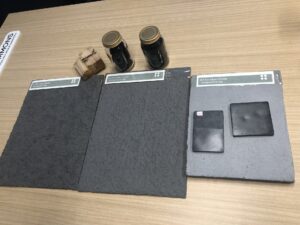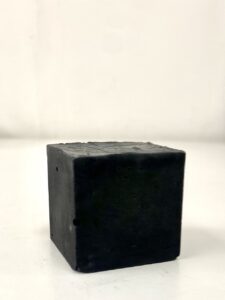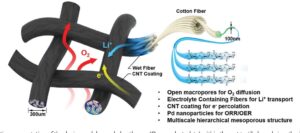In wastewater treatment plants, a large amount of waste activated sludge (WAS) is produced, which can be a valuable resource if properly managed. Anaerobic biological treatment is a promising technology for treating WAS, as it can generate biogas (mainly methane) while stabilizing the sludge. However, the sludge residue left after anaerobic treatment can be a challenge to dispose of.
This study investigated the use of biochar, a charcoal-like material made from organic matter, as a way to improve the anaerobic digestion of WAS and reduce the amount of sludge residue. The researchers prepared biochar from three different types of sludge: sludge residue, iron-rich sludge residue, and iron-rich fermented sludge residue.

They found that adding biochar to the anaerobic digesters improved methane production, with the biochar derived from iron-rich fermented sludge residue performing the best. This biochar increased methane production by 23.4%.
The researchers also investigated why the biochar improved methane production. They found that the biochar had a unique structure that helped to break down the organic matter in the WAS more efficiently. Additionally, the biochar provided a favorable environment for the microorganisms that produce methane.
This study suggests that biochar can be a valuable tool for improving the anaerobic digestion of WAS. This could help to reduce the amount of sludge residue produced by wastewater treatment plants and generate more renewable energy.
Key Findings:
- Biochar can improve methane production from WAS.
- Biochar derived from iron-rich fermented sludge residue performed the best.
- The biochar’s unique structure and favorable environment for microorganisms contributed to its effectiveness.
- Using biochar in anaerobic digestion could help to reduce sludge residue and generate more renewable energy.
Future Potential of the Research:
- The research on developing energy and resource recovery technologies from waste activated sludge (WAS) in urban wastewater treatment plants (WWTPs) has the potential to contribute to carbon neutrality goals and building waste-free cities
- Anaerobic biological treatment of WAS, with a focus on improving solubilization through various pretreatment methods, shows promise as a low-carbon footprint technology with dual advantages of bio-fuel recovery and sludge stabilization
- Pretreatment methods involving iron species, such as potassium ferrate or Fenton pretreatment, have been proven to be efficient alternatives for improving solubilization in WAS
- The research aims to increase the resource availability of WAS by increasing the contents of soluble organics and nutrients in fermentation liquor
- However, it is important to address the iron-rich sludge residue can potentially pollute water and soil
How does this research improve humanity?
This research aims to develop more sustainable technologies for managing waste sludge from wastewater treatment plants. This dual benefit of energy production and sludge stabilization supports carbon neutrality goals while preventing pollution. If successful, it could help create more efficient and eco-friendly wastewater treatment overall – ensuring cleaner water and lands for communities, as well as improved public health outcomes.
source:https://www.sciencedirect.com/science/article/abs/pii/S1385894723071085






